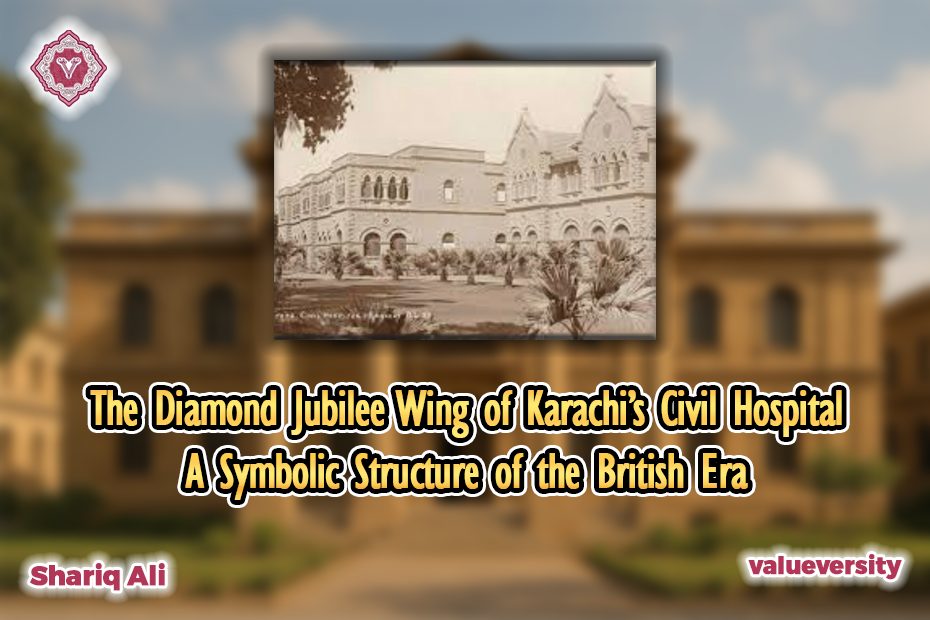The Diamond Jubilee Wing of Karachi’s Civil Hospital — A Symbolic Structure of the British Era
By Shariq Ali
Valueversity
The 27th of October, 1900, will forever be remembered in Karachi’s medical history. On this day, the Viceroy of India, Lord Curzon, and his wife, Lady Curzon, laid the foundation stone of a new section of the Civil Hospital Karachi — the Diamond Jubilee Wing.
This building was constructed in commemoration of Queen Victoria’s sixty-year reign and was one of the welfare projects undertaken during the British colonial period.
The grandeur of this occasion is still preserved in newspapers and official records of that time. On this memorable day, Lord Curzon himself donated Rs. 500, a considerable amount in those days. This act symbolized not just the foundation of a building, but the beginning of a modern medical system taking root in the Indian subcontinent under the supervision of the British administration.
With the construction of the Diamond Jubilee Wing, the layout of Civil Hospital Karachi changed significantly. The new block included separate wards for European patients, nurses’ residences, and modern medical facilities for that era. The building’s architectural design was a fine example of British colonial architecture, featuring tall columns, arched doorways, and exquisite stone masonry that still seems to narrate its story.
This expansion project reflected not only public health advancement but also the social hierarchy of the time. The separate wards for Europeans and locals highlighted the discriminatory attitudes of the colonial system. Yet, it is equally true that these very projects laid the foundation of modern healthcare infrastructure in what would later become Pakistan.
Today, when we stand before the old blocks of Civil Hospital Karachi, we can almost feel the century-old history breathing within its walls — a history that transformed Karachi into a medical hub, from where thousands of doctors, nurses, and healthcare workers later spread across the country and even to distant parts of the world.
This event reminds us that history is not merely a tale of the past, but the foundation upon which the present stands. The brick laid in 1900 still speaks to us — that knowledge, health, and the welfare of humanity remain, in every age, the true symbol
